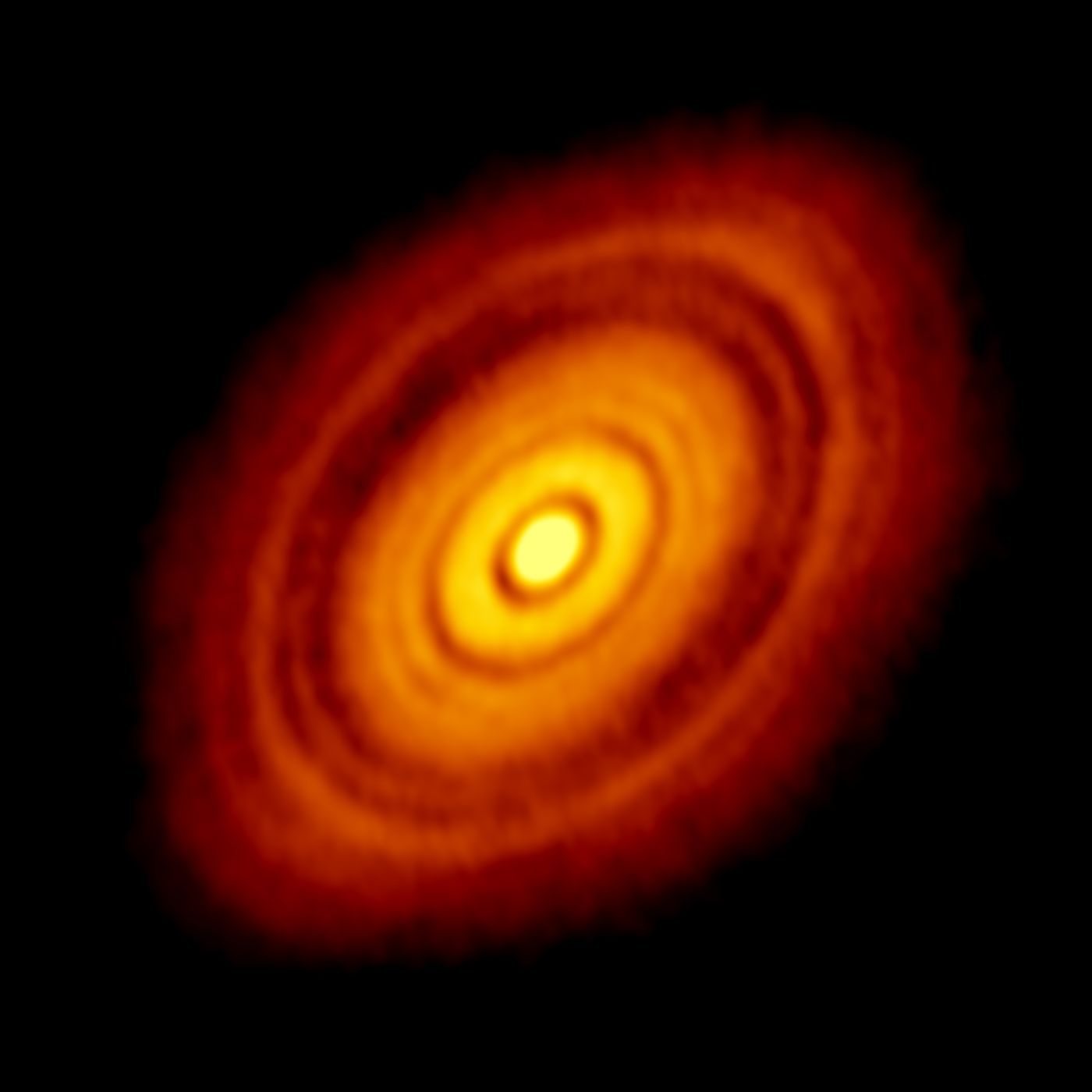A Reflection on ALMA's Ground-Breaking Images of HL Tau
In 2014, astronomers began testing the new high-resolution capabilities of the Atacama Large Millimeter/submillimeter Array (ALMA). The team of scientists leading the science verification testing phase of the telescope’s new receivers wanted to choose targets that would highlight the main science goals of ALMA, while also pushing the limits of what might be possible with these new and improved capabilities. One of the targets chosen, HL Tau, was somewhat controversial. The target was chosen because it had been previously well studied and astronomers presumed that high-resolution observations of the object might reveal some previously unseen structure. Imagine putting on glasses for the very first time. Although, at the time, there was little evidence that were would be anything interesting to see, such as substructure in its planet-forming disk, since the system was at a relatively young stage of protoplanetary disk evolution. Instead, what resulted was the best image ever produced using ALMA, as well as the clearest picture of planet formation to date!
HL Tau is a very young star system located approximately 450 light years from Earth. The image obtained by ALMA revealed amazing details in the planet-forming disk that orbits this Sun-like star. The image revealed multiple concentric rings that had never been observed in any system before, but are not considered to be hallmarks of planet formation. This was a ground-breaking observation that changed astronomers’ understanding of planet formation.
Now, 7.5 years later, we can see how crucial these observations were, leading to major breakthroughs in the understanding of planet formation. The data has now been cited in more than 1,000 scientific papers! The incredible number of papers that cite these key observations are evidence of their scientific impact. The observations opened a new window to the study of planet formation, inspiring seasoned astronomers, as well as an entire generation of young astronomers, myself included!
In addition, the observations opened the eyes of astronomers to the amazing capabilities of the telescope, ushering in an era of nearly a decade of even more incredible discoveries. Now, the U.S. National Science Foundation’s National Radio Astronomy Observatory (NRAO) is embarking on upgrades to the telescope’s receivers that were responsible for the clarity of the observations of HL Tau. The Wideband Sensitivity Upgrade will improve the sensitivity of ALMA and will also include the development and deployment of more powerful digital signal processing technology. These upgrades are essential to enable another leap in the capability of the telescope and will surely pave the way to even more incredible discoveries that we can’t possibly imagine!









